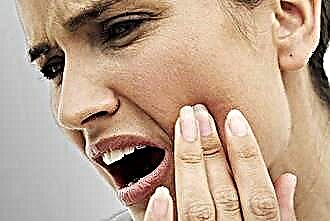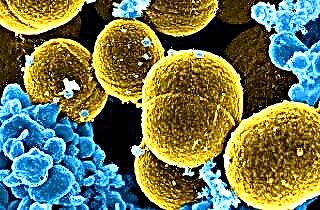Puncture of the sinus wall with sinusitis is one of the most common surgical interventions in otolaryngology. It is used in cases when it is necessary to quickly relieve severe symptoms of the disease, as well as when it is impossible to remove the accumulation of pus and mucus in the paranasal sinuses in another way. Despite the fact that this procedure has been used for a very long time, its implementation is still shrouded in legends. Therefore, patients are primarily interested in the question of what the consequences of a puncture with sinusitis may be.
Why is a puncture prescribed for sinusitis
 The main danger of maxillary sinusitis is that in the human skull, in the immediate vicinity of critical organs, there is a source of inflammation and a large amount of pus and infected mucus, which can spread throughout the body, causing very serious complications. Drug therapy is not always effective enough, especially if treatment was started late, and the inflammatory process covered the entire nasal cavity and the accessory chamber, blocking the anastomosis with strong edema. In this case, a forced drainage of the accumulated mucus is necessary.
The main danger of maxillary sinusitis is that in the human skull, in the immediate vicinity of critical organs, there is a source of inflammation and a large amount of pus and infected mucus, which can spread throughout the body, causing very serious complications. Drug therapy is not always effective enough, especially if treatment was started late, and the inflammatory process covered the entire nasal cavity and the accessory chamber, blocking the anastomosis with strong edema. In this case, a forced drainage of the accumulated mucus is necessary.
If the puncture is not carried out in a timely manner and the purulent exudate is removed from the sinus, then maxillary sinusitis can cause the following complications:
- acute otitis media with possible hearing loss;
- meningitis and encephalitis;
- inflammation of the eyeball and deterioration of vision up to its complete loss;
- apnea syndrome (temporary cessation of breathing during sleep);
- myocarditis (inflammation of the heart muscle);
- damage to the lower respiratory tract (bronchitis, pneumonia);
- urethritis and cystitis due to the spread of infection through body fluids;
- severe tonsillitis;
- complete loss of the olfactory reflex;
- frequent respiratory diseases.
The above list of possible problems indicates that sinusitis is not a joke, and you need to treat it with any effective method. And one of the fastest, most affordable and effective methods is maxillary sinus puncture.
Who is the procedure contraindicated for?
Sinus puncture with maxillary sinusitis is a necessary measure when other methods have failed. However, some categories of patients are not prescribed it, but continue treatment using conservative methods. Reasons that prevent the implementation of an invasive intervention include:
- Early childhood. For babies whose maxillary sinuses have not yet fully formed, a puncture is prescribed only when absolutely necessary, and it is carried out under general anesthesia in a hospital hospital.
- Acute infectious diseases occurring in the patient's body at the time of illness of his maxillary sinusitis.
- Congenital disorders in the structure of the paranasal sinuses. Some people have very small or irregular air pockets that can make surgery very difficult.
- The patient has a serious illness that affects the entire body (hypertension, tuberculosis, diabetes mellitus).
When deciding on the need for a puncture to clean the nasal paranasal chambers, the doctor must assess the patient's condition in a comprehensive manner, taking into account all known factors. If the risk from the intervention exceeds the risk from the disease itself, then a decision is made to adhere to conservative therapy.
Carrying out a puncture without taking into account contraindications may result in sepsis or meningitis, and the problem in this case will not be in the puncture, but in an insufficiently substantiated decision on its use.
The real consequences of a puncture for sinusitis
Despite its simplicity, like any surgical intervention, puncture can be fraught with some dangers. Most often, in the treatment of sinusitis with a puncture, the consequences are associated with errors of the staff, primarily the otolaryngologist who manipulates, or with the unpredictable behavior of the operated person. Also, the patient often has a special structure of the maxillary sinus, and this can not always be seen on an X-ray. Fortunately, the negative consequences after puncture of sinusitis happen only sporadically.
Complications after puncture can be local or general. Local complications include:
- Bleeding caused by damage to blood vessels during surgery. As a rule, the amount of blood flowing out is small, so the symptom can be easily stopped by introducing a hemostatic sponge or a tampon dipped in a vasoconstrictor into the nasal passage. For more severe bleeding, an anterior nasal tamponade is performed. Since each person has a unique pattern of the vasculature, it is very difficult to predict the possibility of bleeding.
- Hematoma in the facial bone, which can occur when accidentally piercing the posterior wall of the sinus and damage to the bones of the pterygoid-palatine fossa.
- Perforation of the tissues of the cheek or wall of the orbit of the eye is usually associated with the individual characteristics and non-standard structure of the air bones of the patient's skull. This is unpleasant, but more often than not
 entails serious consequences, since during the puncture, antibiotics are necessarily used, which do not give the infection the opportunity to cover other tissues.
entails serious consequences, since during the puncture, antibiotics are necessarily used, which do not give the infection the opportunity to cover other tissues. - Air embolism. The cause of this complication is air getting into adjacent tissues or voids. Sometimes there can be a simultaneous spread of pus, but antibiotic therapy suppresses pathogens. According to experts, air embolism can seriously threaten only patients with weak immunity.
- The ingress of air and pus into the blood vessels, including the orbital. Such situations are extremely rare, but very dangerous. They can cause the development of phlegmon and abscesses of the orbit, blockage (embolism) of blood vessels, blindness and even lead to death.
- Puncture of the ethmoid labyrinth during puncture for children with not fully formed maxillary sinuses. May cause swelling around the eye socket. It is extremely rare.
- Temporary visual impairment due to the rapid filling of the accessory pocket with air after breaking through the sinus wall.
Common complications include the following conditions:
- Anaphylactic reaction (shock) to the anesthetic used. Occurs in cases when in a hospital, in violation of the treatment protocol, a preliminary test for individual intolerance to the most common painkillers, such as lidocaine and novocaine, is not done.
- Collaptoid reactions such as loss of consciousness (fainting), sudden blanching or acrocyanosis (bluish color of the skin), and decreased blood pressure. This is often the result of fear and intense anxiety from the expected operation. Physicians in any surgical intervention should be prepared for such excesses.
Often, after the procedure, the patient's body temperature rises. This basically indicates that the ENT doctor selected the correct composition of preparations for washing and treating the accessory chamber, including an antibiotic. The medicine begins to actively destroy bacteria, parts of which enter the bloodstream and release toxins. The immune system quickly reacts to such a situation, which raises the body temperature to combat foreign bodies, sometimes quite strongly. As a rule, the temperature does not last long, a maximum of one day.
If the temperature continues to hold for more than a day, then you need to contact a specialist for additional examination.
Some patients complain of nasal congestion after invasive surgery.
 If this sensation appeared immediately after the operation, then this situation is quite normal, since the soft and bone tissues were damaged by the needle. Under the influence of the drugs used, this phenomenon quickly passes.
If this sensation appeared immediately after the operation, then this situation is quite normal, since the soft and bone tissues were damaged by the needle. Under the influence of the drugs used, this phenomenon quickly passes.- If the congestion began to appear some time after the intervention, then this may indicate that the antibiotic could not destroy the bacteria or fungi that were the causative agents of the disease, and it is necessary to select a more effective remedy. The inflammatory process can spread from diseased teeth, as well as due to the presence of cysts, polyps or allergies. In this case, after an in-depth examination, the doctor will develop an improved treatment regimen.
Mythical consequences of a puncture
Rumors about the terrible pain and harm of a puncture are very common among patients. Many of them are ready to go to any tricks, to be treated with herbs for months, but not agree to an operation. This often leads to the development of serious complications or to the transition of the disease into a chronic form. Let's look at some of the most common puncture myths.
A puncture is a very painful procedure. In fact, the use of modern anesthetics makes the manipulation completely painless. The patient is fully conscious, but only feels that something is being done in his nose with a foreign object. Certain discomfort may occur after the end of the anesthetic, but they are not strong, if necessary, you can take an analgin or paracetamol tablet. Also, when flushing the sinus, an unpleasant feeling of fullness from the inside is possible, which lasts for several seconds.
During the penetration of the bone wall of the sinus, a quiet characteristic crunch is heard. Reklāma: Kaņepju eļļa CBD eļļa un kapsulas drošā un efektīvā veidā - H Drop Latvia It seems very loud to a person, since the manipulation is carried out in the immediate vicinity of the ear, and the sound is transmitted through the bones of the skull. Most often, general excitement, fear and an unpleasant crunch are perceived by the patient subjectively, as painful sensations that are stored in the memory. By the way, experienced otolaryngologists, during several interventions, carried out one after the other for several days, are able to get into the hole punched during the first puncture, so the crunch is almost not felt in the future.
If you make a puncture once, you will have to repeat it again with each illness. This statement is incorrect, a puncture only one-time helps to evacuate purulent exudate from the cavity and introduce the necessary medications there. As a rule, with an acute form of sinusitis, 1-3 penetrations are enough, with an exacerbation of chronic sinusitis - at least 5. The hole in the sinus wall, made by the Kulikovsky needle, completely overgrows in just a few weeks.
 There are cases when a second operation is required due to the fact that after the puncture the patient considered the job done and abandoned treatment before all pathogens were destroyed. This approach can lead to the return of sinusitis and the development of resistance in bacteria (resistance) to the antibiotic that was used for treatment. In order not to endure unpleasant sensations, you need to clearly follow the instructions of the attending physician: completely undergo a course of antibiotic therapy, rinse your nose with solutions with medications (potassium permanganate, furacilin) or medicinal herbs, do not go out into the cold after surgery, etc. If after a certain time a person falls ill with sinusitis again, then he may well take advantage of drug treatment, provided that therapy is started on time, and not when pus again accumulates in the sinuses.
There are cases when a second operation is required due to the fact that after the puncture the patient considered the job done and abandoned treatment before all pathogens were destroyed. This approach can lead to the return of sinusitis and the development of resistance in bacteria (resistance) to the antibiotic that was used for treatment. In order not to endure unpleasant sensations, you need to clearly follow the instructions of the attending physician: completely undergo a course of antibiotic therapy, rinse your nose with solutions with medications (potassium permanganate, furacilin) or medicinal herbs, do not go out into the cold after surgery, etc. If after a certain time a person falls ill with sinusitis again, then he may well take advantage of drug treatment, provided that therapy is started on time, and not when pus again accumulates in the sinuses.
A puncture is very dangerous because of its complications. With a high-quality execution of the manipulation, there are no negative consequences for the puncture. The otolaryngologist, who performs dozens of such interventions per month in the hospital, practically does not make mistakes. Young specialists work under the supervision of experienced doctors. In order to assess the danger of a puncture, it is enough to go back a few paragraphs up and compare the very rare consequences that can occur during a puncture, and the severe complications that are threatened by inadequate treatment of sinusitis or the failure to take appropriate measures to eliminate it.
A puncture is prescribed in case of urgent need, when it is urgently necessary to relieve severe symptoms and remove pus from the sinus. The positive point is that antibiotics are used, which have a pronounced, but local effect. With traditional therapy, antibiotics are prescribed with a wide spectrum of action, which have a greater number of side effects. If some pus remains in the cavity, the maxillary sinusitis can become chronic.

 entails serious consequences, since during the puncture, antibiotics are necessarily used, which do not give the infection the opportunity to cover other tissues.
entails serious consequences, since during the puncture, antibiotics are necessarily used, which do not give the infection the opportunity to cover other tissues. If this sensation appeared immediately after the operation, then this situation is quite normal, since the soft and bone tissues were damaged by the needle. Under the influence of the drugs used, this phenomenon quickly passes.
If this sensation appeared immediately after the operation, then this situation is quite normal, since the soft and bone tissues were damaged by the needle. Under the influence of the drugs used, this phenomenon quickly passes.

